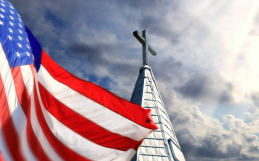Summer is the time when many nonprofits and churches host a number of different programs for both youth and adult groups — mission trips, camping excursions, hiking or other outdoor activities that allow nonprofits to bring their communities closer. This year will definitely be different due to the coronavirus. But whenever we return to “normal,” these events will likely also return — and when they do, nonprofits need to know exactly how well liability waiver and consent forms protect them from liability.
In California, liability waivers are considered to be legally enforceable contracts in which participants in an event or activity assume the risk for potential injury. However, liability waivers only protect organizations from incidents that arise from ordinary negligence, which state law defines as “the failure to use reasonable care to prevent harm to oneself or to others.”
Waivers and consent forms do not protect California nonprofits (or any business for that matter) from gross negligence, which is generally defined as “the lack of any care or an extreme departure from what a reasonably careful person would do in the same situation to prevent harm to oneself or to others.”
In addition, a liability waiver will not protect a nonprofit in cases where an injury has been caused by recklessness, an intentional wrongful act, or in violation of state or federal law.
Unlike many other states, California does allow minors to sign liability waivers as long as a parent or legal guardian also signs the waiver. A parent can also sign on behalf of his or her child. While minors are typically barred from entering into legal agreements before they turn 18, a liability waiver that is signed by a parent or guardian will be considered a legal contract in California.
Guidance for Using Waivers and Consents
Although waivers and releases don’t provide nonprofits with blanket protection, there are a number of legal and other benefits to using them as long as they are drafted properly:
Be specific. Waivers that are too broad or general are more likely to be voided by a court since it may be unclear to the participant exactly what he or she is waiving. Language in waivers and consents should be specific, describing the activity in detail and identifying any potential risks associated with the activity.
Be clear. Courts will consider whether a waiver or consent can be understood by a person without any legal training so your nonprofit’s waiver should be drafted with that in mind. Forms that include pages of legal terms and jargon are actually more difficult to legally enforce, so keep it simple.
Be thorough. Waiver and consent forms should provide ample opportunity for participants to provide the organization with information about any unique needs or requirements. Participants should be asked to list medications, medical restrictions, allergies, illnesses, injuries, or any other special needs. If you plan to photograph or videotape the activity, consent for media usage is also appropriate. Parents and participants should also be required to certify that a participant is fit for any physical activities that may be involved and provide consent for the participant to receive any necessary medical care.
In addition, nonprofits should carry adequate liability insurance to fill any legal risk gaps that may exist.
The Church Law Center of California assists religious and secular nonprofits with governance challenges. We can help your organization examine its board procedures and develop good practices. To find out how we can be of help to your organization, call us at (949) 892-1221 or reach out to us through our contact page.






